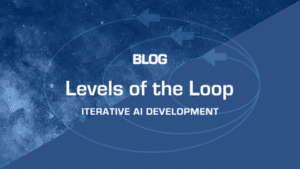Artificial Intelligence (AI) is an incredible tool that has proven its worth in various fields, from healthcare to entertainment, finance, and beyond. Yet, despite the success stories, it’s a sobering truth that many AI projects do not reach fruition.
According to Gartner, up to 85% of AI projects do not deliver on their promises. Here are 7 of the core hidden causes, and a Jaxon solution to address these challenges to increase success rates of AI initiatives:
- Misalignment Between Problem and Solution
AI projects require a clear and well-defined problem statement. Without it, it’s easy to lose sight of the business’s needs, leading to AI solutions that don’t align with objectives. Moreover, AI solutions are often retrofitted into existing processes without considering the design implications, turning the project into a guessing game. Organizations get caught up in the AI hype, and attempt to retrofit AI solutions to problems that might not even require them. AI is a tool, and like any tool, it needs to be applied to the right problems to yield the best results. Start with a well-defined problem and work towards the solution.Jaxon’s AutoSpec specifically addresses this.
- Customization Woes for Domain-Specific Use Cases
AI is not one-size-fits-all. Different domains and use cases require tailored AI solutions. If an AI project is approached with a generic mindset, it will likely fail to deliver optimal results. It’s essential to account for the unique characteristics and requirements of each domain and to customize the AI solution accordingly. - Neglecting the Importance of Data Quality
As AI practitioners, we’ve all come across the saying, ‘garbage in, garbage out.’ The success of any AI project hinges significantly on the quality of data that’s available. Yet, time and again, data quality is overlooked. A common pitfall is underestimating the importance of data cleaning and preprocessing, leading to models trained on incomplete or noisy data, ultimately yielding unreliable predictions. As practitioners, we must prioritize investing time and resources in ensuring the data we feed into our models is of the highest quality. - Lack of Expertise and Understanding
AI is a complex field, requiring a blend of skills and expertise ranging from computer science to statistics and domain knowledge. Skilled data scientists are both costly and challenging to find, presenting a significant obstacle to many AI projects. Often, projects fail because there’s a gap in understanding AI technology and its capabilities or a lack of skilled personnel to drive the project. Investing in training and education, or seeking external expertise when needed, can significantly improve the success rate of AI projects. - Retention of Knowledge
Institutional knowledge is the powerhouse of an organization’s experience and skills. It offers a huge strategic advantage, but too often that expertise is stored in the heads of senior staff that are limited in their reach across the organization, and when they leave that knowledge leaves with them. - Ignoring Bias and Ethical Considerations
Gartner’s report cautions that AI projects deliver erroneous outcomes due to bias in data, algorithms, or the teams responsible for managing them. It’s essential to proactively check for and mitigate biases in your data and models to avoid unfair or unjust results. - Insufficient Evaluation and Testing
Lastly, a common issue I’ve observed is insufficient testing of AI systems. Rigorous evaluation, validation, and testing are vital for any AI project. Without these critical steps, you run the risk of deploying an AI system that doesn’t perform as expected or, worse, causes harm.Rapid prototyping (fast iterations) is the way.
Conclusion
Navigating the AI landscape can be challenging, but by understanding common pitfalls and how to avoid them, we can increase our chances of success. Keep these considerations in mind, and remember, while AI holds extraordinary promise, it’s not a magic wand that can solve all problems. It’s a tool, and its effectiveness depends largely on how well we use it.


